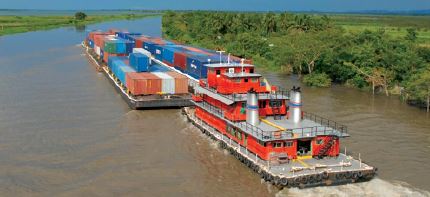Natural Resources
[vc_row][vc_column width=”1/2″][vc_column_text]A country’s wealth goes beyond its GDP and includes its people and natural resources. Natural resources are raw materials and natural assets. They can be defined narrowly as raw materials that can be used for economic production or consumption e.g. oil, minerals, land, timber, and water. With a distinction often made between renewable natural resources (e.g. timber, water and renewable energy) and non-renewable resources such as oil and minerals. A broader definition of natural resources includes materials and systems that contribute to the functioning of the economy and life itself e.g. air and biodiverse ecosystems. In economics, the narrow definition is most widely used with a focus on consumable and finite resources because they are easier to measure. In 2018, the World Bank released the Changing Wealth of Nations report, which estimated the natural wealth of nations including fossil fuels, minerals, agricultural land, forests, and protected areas. The seven countries with the highest overall natural wealth in 2014 were China (20.6tr USD), Saudi Arabia (7.8tr), Brazil, (7.6tr), the USA (7.5tr), Russia (6.7tr), India (6.1tr), and Australia (4.2tr). The main source of China’s natural wealth was agricultural land (60.7 percent). For Saudi Arabia it was oil (96.4 percent). Brazil had a mix of sources: agricultural land (33.2 percent), forests (23.3 percent) protected areas i.e. the Amazon (19.6 percent), and minerals (16 percent). For the USA the main sources were agricultural land (29 percent), forests (28.7 percent), coal (20.5 percent), and oil (10.7 percent). Russia’s main sources were oil (50.4 percent) and natural gas (19.4 percent). India’s main sources were agricultural land (73.1 percent) and coal (10.3 percent). Australia’s main sources were minerals (49.5 percent), forests (28.7 percent), and coal (11.2 percent). In terms of renewable energy (excluding hydroelectric), the USA was the largest producer in 2015 with 317.4bn kWh. It was followed by China (283.9bn kWh), and Germany (168.4bn kWh). After the oil shocks in the 1970s, interest grew in use of renewable energy as an alternative energy source. A better understanding of the benefits and interrelatedness of natural resources such as air, weather, and ecosystems has led to greater efforts to protect these natural resources. International efforts to address the problem of climate change is a prime example of such efforts.[/vc_column_text][/vc_column][vc_column width=”1/2″][vc_column_text]
Recovering the Magdalena River Waterway: Challenge Accepted
Loading, Please Wait!
This may take a second or two.















































































